-
Step into the Design Vision of THE MAGIC FLUTE
By COC StaffPosted in A Season Like No Other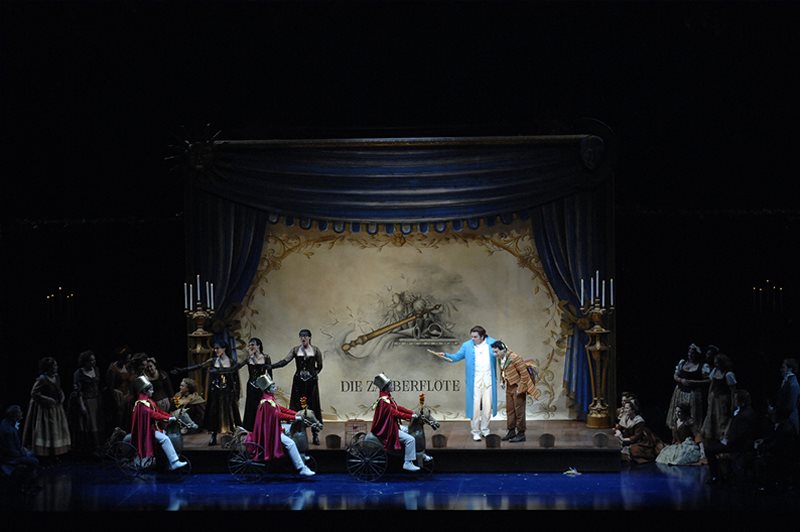 Photo: Gary Beechey
Photo: Gary Beechey
Tony-Award winning director Diane Paulus and acclaimed designer Myung Hee Cho chose to set this production of The Magic Flute at a garden party in 1791—the year Mozart’s classic work was first performed.
Their vision was to create an endearing, story-book atmosphere, inviting audiences into an experience full of whimsy and fantasy, yet also recognizably real and anchored in shared humanity. Read on to learn more!
Looking to secure your seats for The Magic Flute? Try some of our Best Available dates below!
 Designer: Myung Hee Cho
Designer: Myung Hee Cho
When the curtain rises and the overture begins to play, we see a jewel box theatre nestled on the grounds of a noble family’s estate, where preparations are busily underway for Princess Pamina’s name day.
We soon discover that a performance of Flute is part of the celebrations and the opera springs to life, for audiences both on- and off-stage.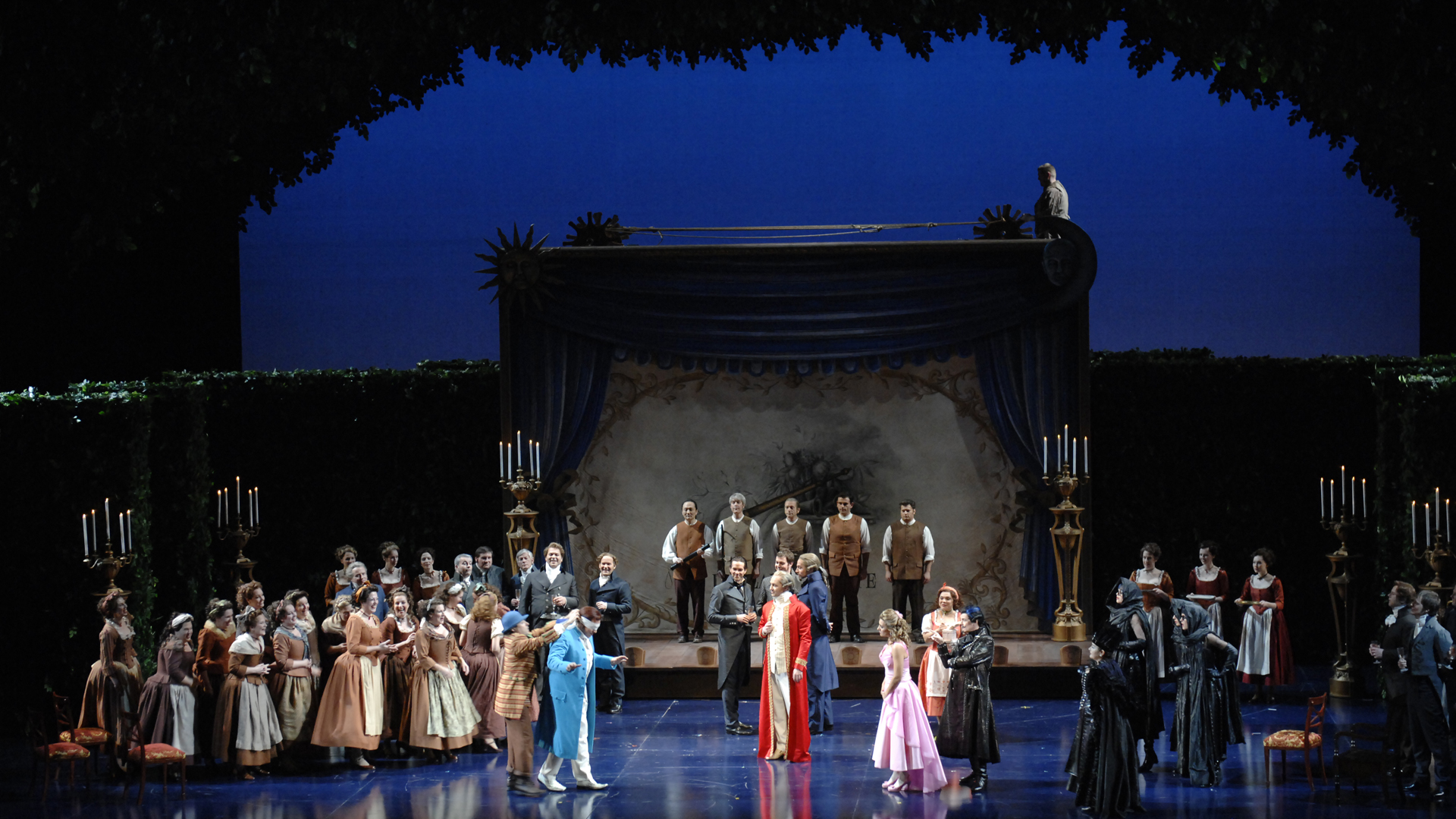 Photo: Gary Beechey
Photo: Gary Beechey
Members of the household, servants, and guests take on different roles in the production.
In joining these two activities—celebrating with loved ones and celebrating the performing arts—the opera becomes a love letter to the theatre and a show about community. The telling of The Magic Flute changes this group of artists and, by extension, us as the audience members.
Throughout the first act, the production maintain this ‘play-within-a-play’ structure, and the style of the performance is playful, stylized, and highly choreographed.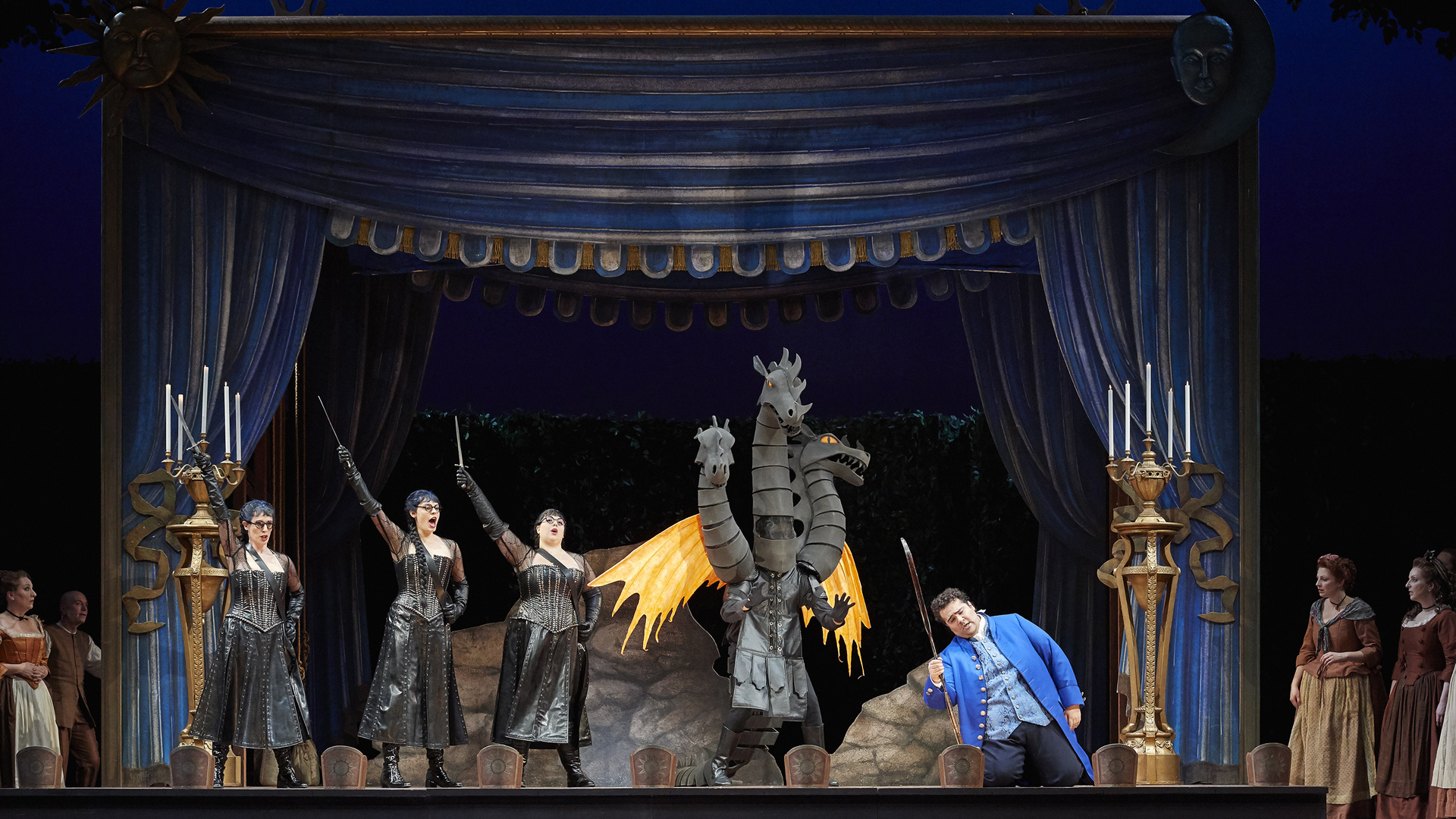 Photo: Michael Cooper
Photo: Michael Cooper
The design of the production is charmingly low-tech and DIY, with characters moving around rock flaps and painted backdrops creating an experience that is both whimsical and suggestive of a collective embrace of make-believe, as if we could all be playing the show in the garden.
One notable element is the painted stardrop background that drops in for the Queen of the Night during her famous aria. Its look takes direct inspiration from a legendary design from an 1815 production of Flute by Karl Friedrich Schinkel.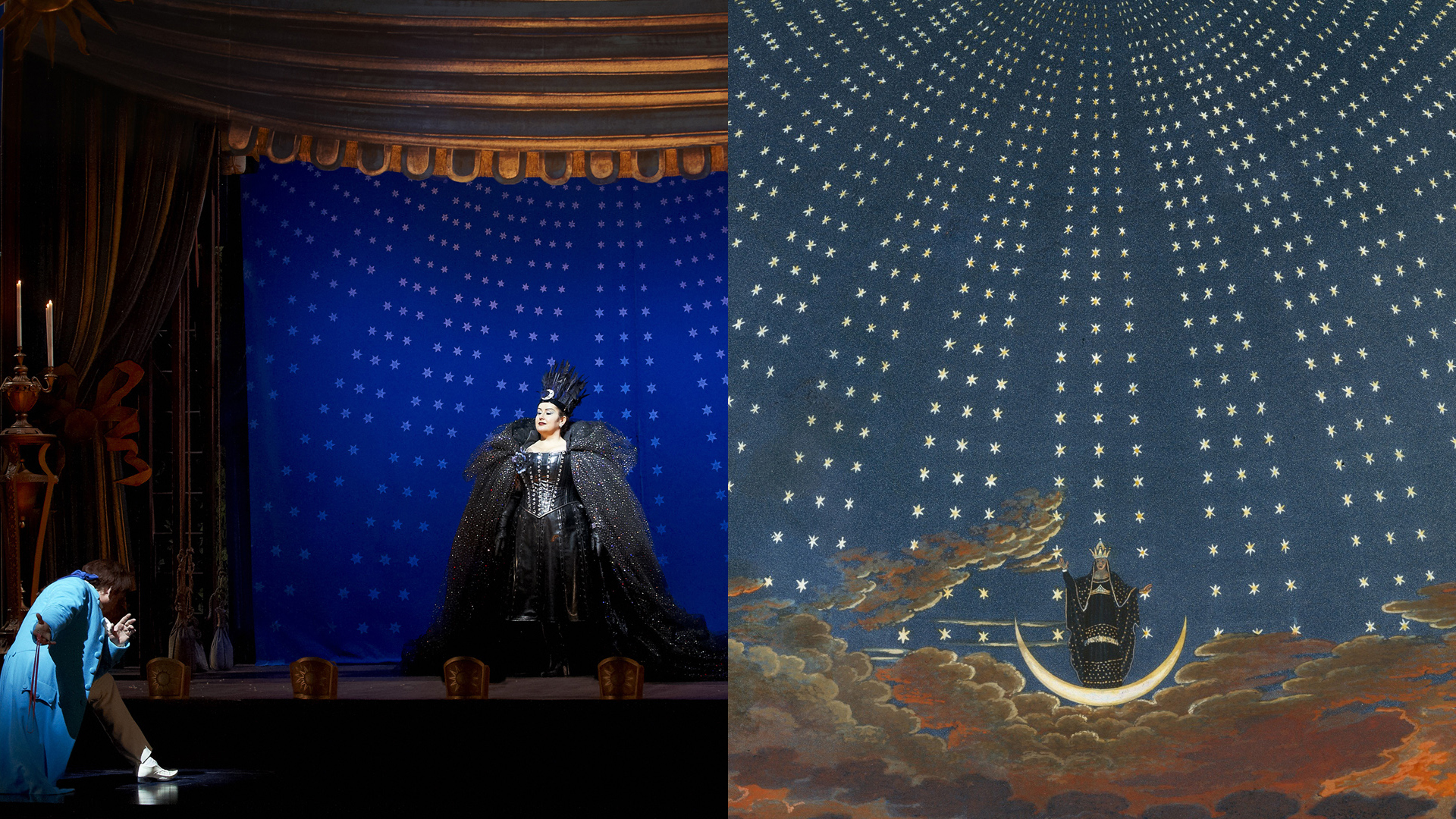 Photo: Michael Cooper, Design: Karl Friedrich Schinkel
Photo: Michael Cooper, Design: Karl Friedrich Schinkel
During the second act, the story gets slightly darker as it follows the deeper meanings within Mozart’s score, including the characters’ passage through trials by water and fire on a journey towards Enlightenment.
The frame of the stage disappears, replacing a proscenium theatre with an elaborate hedge maze that covers the ground of the estates, and the show becomes a living and breathing experience throughout the gardens. Distinctions between fantasy and reality begin to fade away for the characters as they get lost inside a maze that forms both a literal and allegorical journey. Photo: Michael Cooper
Photo: Michael Cooper
There’s a cinematic feel as the garden maze hedges change around the characters to form different configurations from scene to scene with characters walking through them.
Further along the journey, when Tamino and Pamina face the trials by water and fire, the flames are represented by dancers with shimmering red costumes, while during the water trial the production uses umbrella-like structures with cascading long strands to evoke torrents of water.
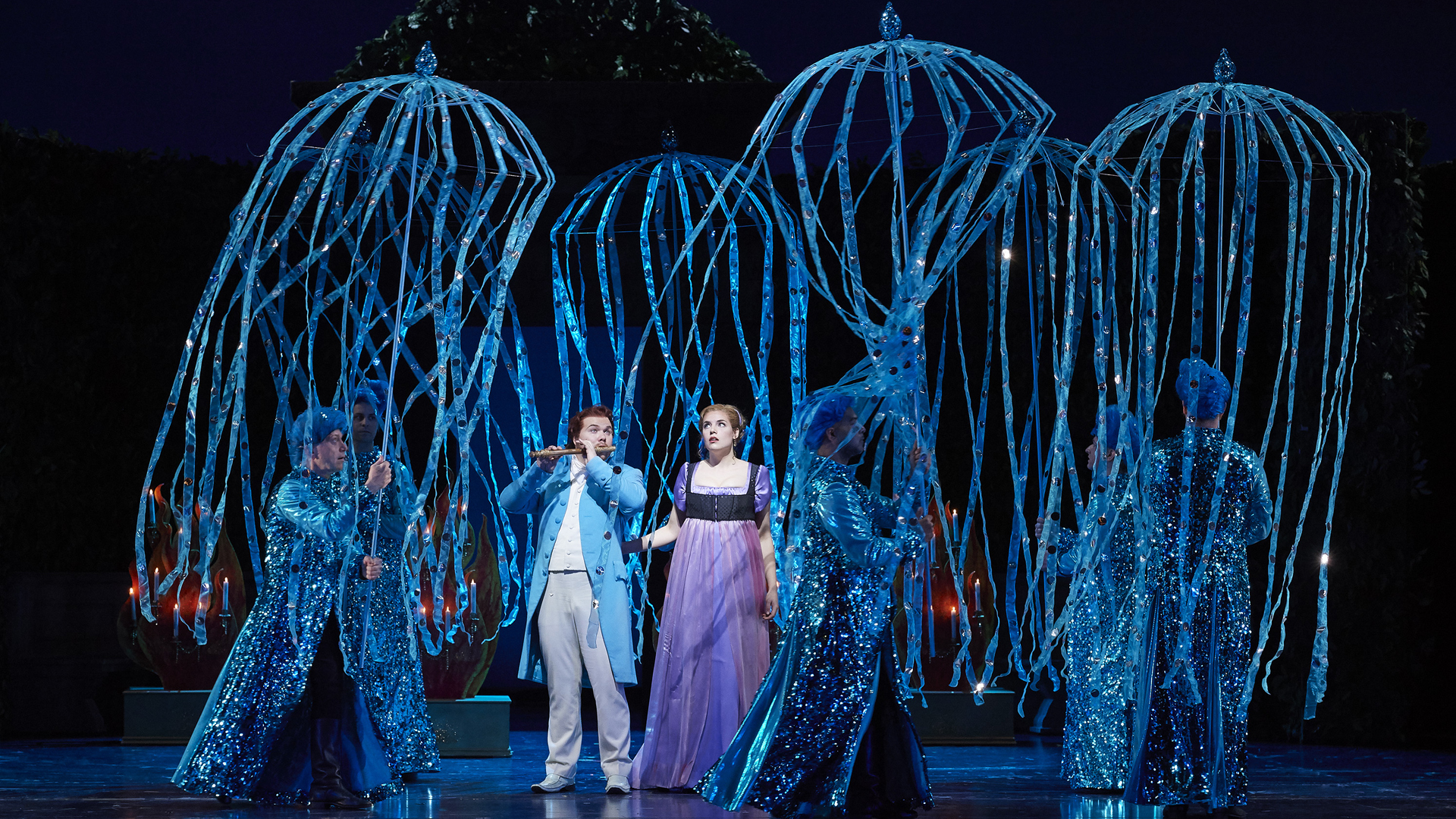 Photo: Michael Cooper
Photo: Michael Cooper
Costumes in the production reflect Mozart’s time and bring the story down to a human level. But they do have a fairytale—and at times contemporary—bent to them as well. For example the all-black look of the Queen of the Night has leather and spiked hair that evokes Goth fashion. Her elaborate look features a striking star cape that requires more than 35 yards of tulle.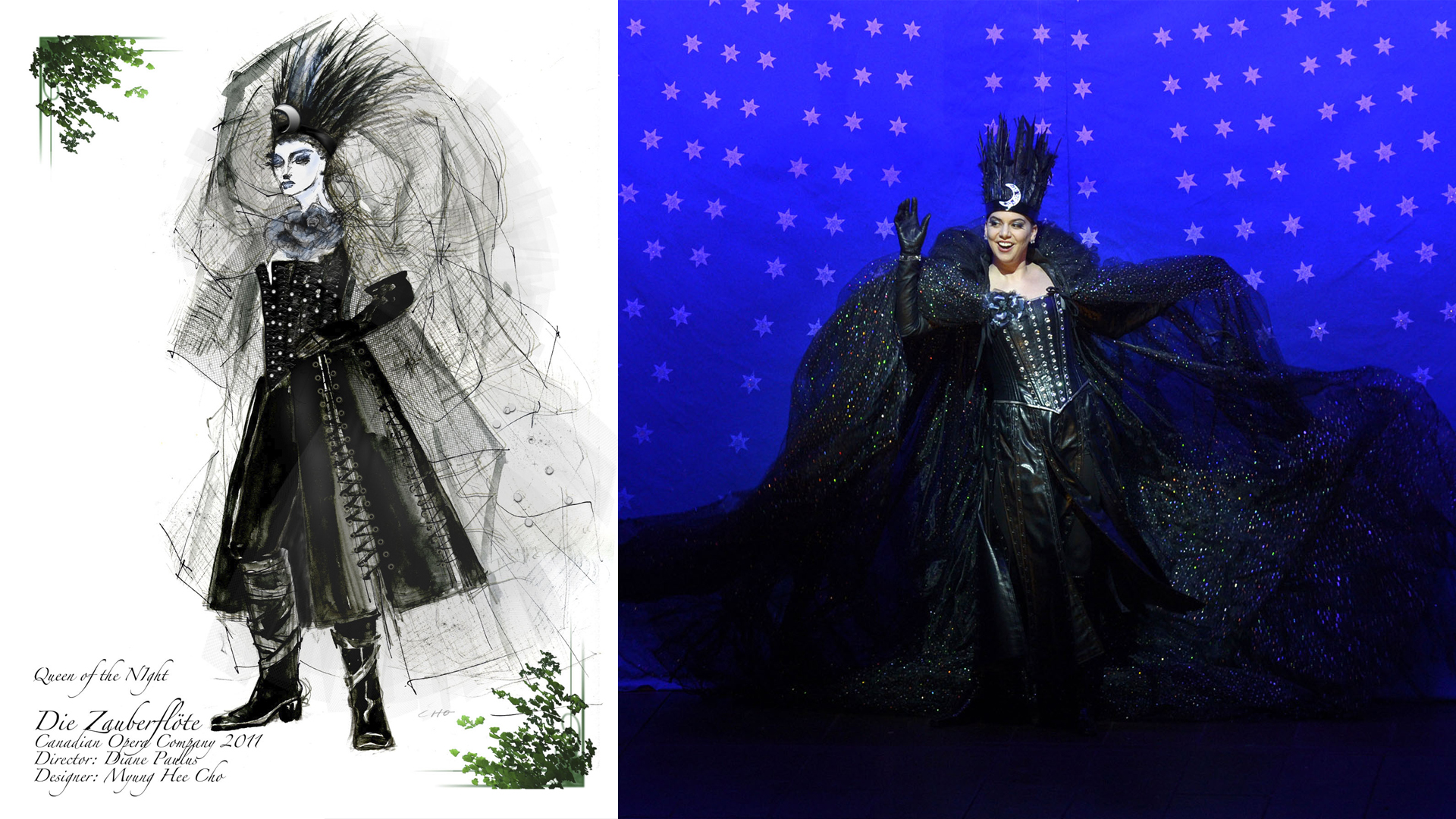 Photo: Ambur Braid
Photo: Ambur Braid
Designer Myung Hee Cho also created fantastical bird and animal costumes that evoke a charming, playful atmosphere. “There is a homemade, very naïve quality to [the creature costumes] and the images we chose for the animals are very iconic and simple,” the designer shared in an interview during the production’s original staging in 2011. “But they pop against the evening. They are black and white against the greenness of the garden and the deep blueness of the night sky. And again they will evoke the quality of a fairytale, a children’s book.”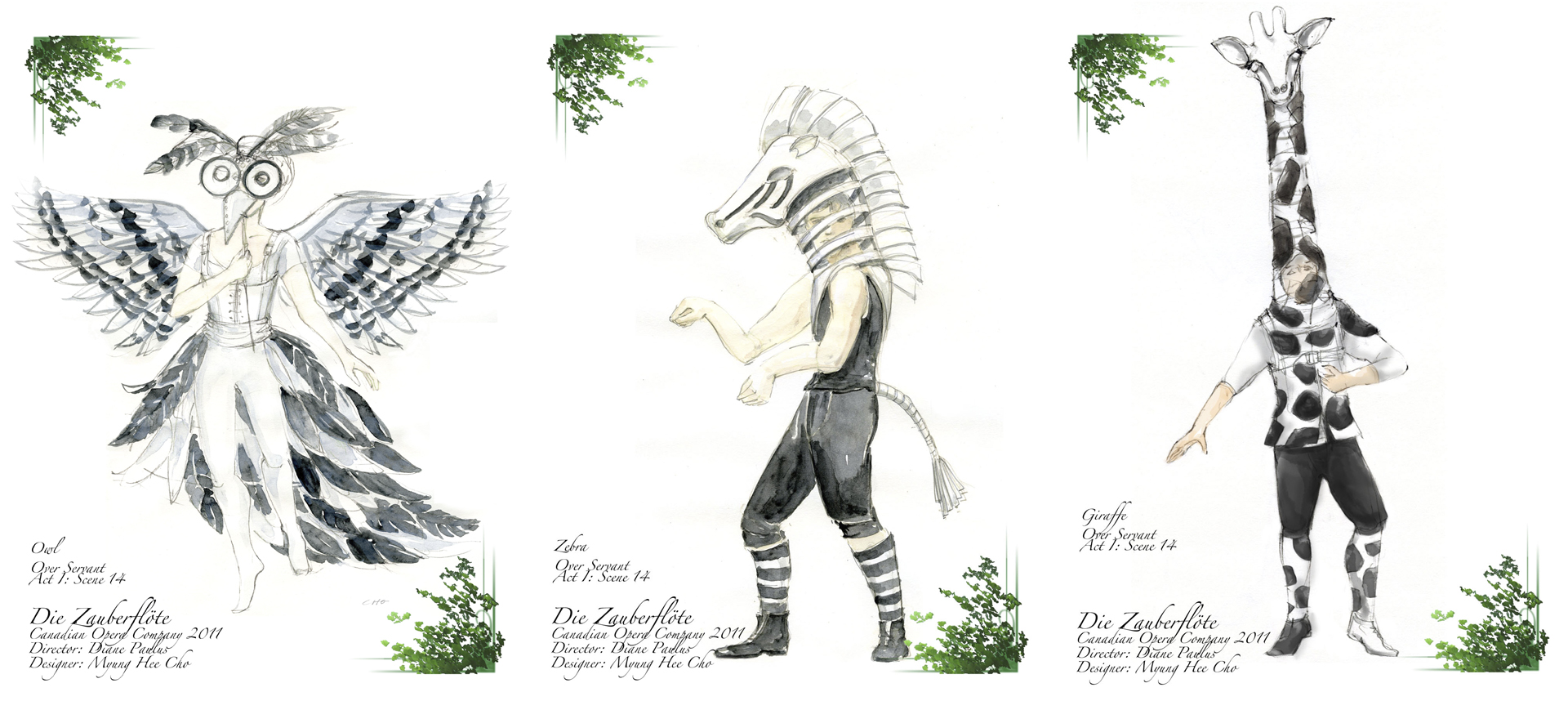 Designs: Myung Hee Cho
Designs: Myung Hee Cho
The idea of these bird and animal costumes is that they could have been made by members of the household for the name day performance, perhaps fashioned out paper or cloth. In fact, they are made out of thin sheet foam, cut and glued together to form the shapes of six different creatures, including a crocodile, elephants, giraffe, griffin, owl, and zebra. Photo: Michael Cooper
Photo: Michael Cooper
Revival director Anna Theodosakis has observed that reviving this popular production of The Magic Flute now, after a very challenging number of years, can offer a source of healing, reflection, and celebration of humanity’s resilience.
Whether in the allegory of the many trials that Tamino and Pamina face, or in the message that love will prevail—it’s a perfect opera to bring us back to the theatre with live audiences.
The Magic Flute runs May 6, 8, 11, 14, 17, 19, and 21, 2022. Tickets are on sale now.
Prev
Page 2/2
